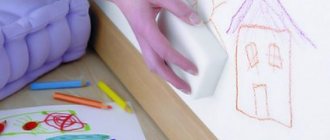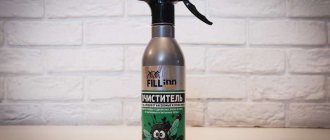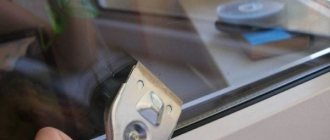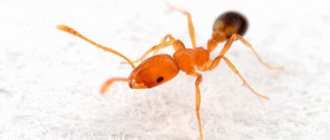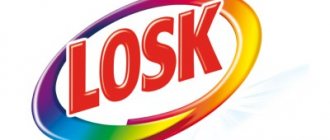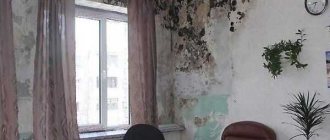Wallpaper is an element of decoration of walls and ceilings that transforms the renovation and makes it unique. Dust, drops, and various contaminants may accumulate on the surface of the facing fabric. To maintain a well-groomed and tidy appearance of the room, you need to know how to clean wallpaper from dirt, using special products or traditional methods.
Rules for cleaning wallpaper
It is easy to wash the wallpaper using special or improvised means, if you know what kind of coating is on the walls. You can find out the brand on the roll or ask a store consultant. Before purchasing building materials, their use is carefully considered. Cleaning conditions depend on the type and brand of finish.
Types of wallpaper:
- waterproof fabrics can be carefully wiped with a cloth dampened with water without using detergents;
- washable coatings can be cleaned with soapy water;
- super washable, resistant to water, can be washed using any detergent;
- resistant and super resistant to friction cleaning.
The packaging indicates the maximum degree of contact of the fabric with water. Before washing, you should consider the type of wallpaper and the material from which it is made.
Paper
The coatings attract with their appearance and low price. Washing them with water is contraindicated. When they come into contact with liquid, they peel off from the walls.
You can clean paper wallpaper from dirt with a soft brush or a clean broom. Use baby powder or talcum powder.
Builders advise coating paper trim with varnish so that the canvas becomes moisture resistant.
Vinyl
The coatings have a hydrophobic surface. Accumulated dust and dirt can be removed with a vacuum cleaner or a brush with soft bristles. Then cleaning is carried out using a wet method. Technologies have made it possible to create a coating with high resistance to moisture and mechanical damage. They last a long time. You can wash vinyl wallpaper using household chemicals and home folk methods.
Vinyl coverings are used for rooms with a high risk of contamination: kitchen, hallway.
Odors are not absorbed into this fabric, and stains are easy to get rid of.
Detergents
You can wash washable wallpaper from dirt in the kitchen using foaming agents and soap solutions. The coating is wiped with damp sponges and detergents. The finishing contains paper; cleaning should not use a lot of water.
Try not to damage the canvas by moving too hard.
Non-woven
Washing depends on the marking; it is indicated on the packaging or roll insert. Most of these coatings can be cleaned with professional products, ordinary household powders or dishwashing gel. It is allowed to treat non-woven wallpaper with a steam cleaner or vacuum cleaner.
Liquid
Not resistant to water. You can wash them off the wall with a wet rag or sponge.
If liquid wallpaper is varnished, it becomes resistant to moisture.
Other
Paintable fiberglass can withstand cleaning of contaminants with water. They are usually painted with waterproof paint so that the surface can be washed. The abrasion-resistant and super-resistant to friction cleaning fabrics can be cleaned with brushes or a vacuum cleaner.
- Review of remedies for the smell of old age in the house
- How to protect your humidifier from plaque
- How to quickly clean grease from a kitchen hood
Photo wallpapers are produced on a paper base that is water-resistant. Washing should be careful so as not to spoil the design. The smooth surface allows you to remove dust using dry methods.
Textile coverings are best cleaned with a vacuum cleaner.
How to wash washable wallpaper
Washing begins after removing dust from the surface. This will help avoid the formation of black marks on the surface. Prepare a solution from warm water and 3-4 tablespoons of liquid product. If there are grease stains on the wall, add a few drops of dishwashing gel.
Procedure:
- Soak a sponge in the prepared solution and squeeze it out so that there are no drips on the wall.
- Wipe dirty areas in one direction, without excessive pressure.
- Rinse treated areas with water.
- Dry the walls with the windows and doors closed. A draft will cause the material to peel off the wall.
Classification of professional cleaning products
Professional chemical cleaning products – Dr.Schnell, Merida, Ecolab. They are produced in the form of powders, gels and sprays.
Before use, powder products are diluted in water and applied to stains.
The concentrated gel should be used with a damp, soft sponge.
The spray is applied to the wall canvas, left for 10 minutes, then wiped with a paper towel or cloth napkin.
Products for home kitchen furniture and mirrors are suitable for wallpaper:
- Pronto – used to remove dust and greasy fingerprints;
- Vanish is a foaming product that removes any dirt.
- Freshbubble – contains baking soda and will cope with greasy stains.
Preparatory activities
Before you begin the cleaning process itself, it would be a good idea to double-check what type of canvas is glued to your wall. This is explained by the fact that the technology for cleaning paper, vinyl and non-woven wallpaper differs significantly from each other.
If you still have markings from the rolls, look carefully at which actions are strictly prohibited and which are encouraged.
In cases where there is no marking, you can use the traditional method. The idea is to wipe a small area of the canvas (for example, behind the TV or sofa, where the canvas is inaccessible to the eye) with a solution of soap or shampoo. If the material has acquired its natural appearance without any streaks after wet cleaning, it is ready for further cleaning.
Review of traditional methods of washing wallpaper
Professional products are expensive. It is more economical to use available means that are no less effective against stains.
Traditional methods have been tested by experience and have proven themselves well. If you have doubts about use, do a test. Clean a small area in an invisible place - behind a sofa or closet.
If the wallpaper has not changed or peeled off, the method can be used on the entire canvas.
Cleaning methods depend on the nature of the contamination.
From greasy stains
Most often, greasy stains appear in the kitchen. Food cooked on gas stains the wallpaper due to steam and splashes.
Talc, baby powder, and starch will help remove greasy stains. You need to act according to the instructions:
- Cover the floor to protect the flooring.
- Place a small amount of powder on a rag or sponge and apply talcum powder to greasy stains.
- After 15 minutes, the powder is removed with a dry sponge.
- If the stains are not removed the first time, apply a cloth and heat it with an iron, so the dirt is removed faster and more efficiently.
You can try using only an iron. Make sure that the canvas does not burn.
Set the iron to medium temperature and turn off the steam mode. 2-3 napkins are applied to the stain, and the heated sole of the iron is passed over them. There should be traces of grease stains on the paper. Change the wipes until the wall surface is as good as new.
For delicate paper wallpapers, you can use rye bread crumb. Press a piece onto the stains for a few minutes. Due to the gluten found in bread, dirt is absorbed from the surface of the bread. For best results, do the procedure twice.
A mushy mixture of gasoline and tooth powder will help remove old grease stains from the wallpaper. Mix gasoline and powder in a 1:1 ratio and apply the mixture to the stains. When dry, remove with a sponge.
A solution of baking soda will help remove grease stains. Dilute a little powder in warm clean water at the rate of 20 g per liter. Wring out the sponge soaked in the liquid, hold it on the surface and remove the dirt with rubbing movements.
An effective remedy in the fight against greasy stains is pure alcohol, solution or alcohol tincture. The main thing is that the liquid is transparent and does not leave any traces. You can spray it on the canvas or gently rub the stains with a cotton pad. Alcohol copes with grease, markers, felt-tip pens, traces of aerosol products, air fresheners, and mosquito sprays.
From soot, soot, tobacco smoke
Citric acid will help wash away the unpleasant yellowness from cigarettes and nicotine on the walls and ceiling of the room. Prepare an acid solution with heated water, and carefully treat the desired area with a cloth. For 1 glass you will need 3 tablespoons of powder. The sponge should be slightly damp; wring it out well.
Leave the dirt remover on the canvas for a few minutes and rinse off with a sponge rinsed in clean water. The product removes alcohol markers, marks from a ballpoint pen, and watercolor paint.
A vinegar solution will help remove soot, glue, and soot stains from wallpaper. Take 50 ml of table vinegar - 6% - a liter of water. Spray the solution on the walls, after five minutes wipe the finish with a damp sponge. It is better to clean with vinegar, protecting yourself with a respirator and opening the windows.
From mold
A solution with 9% vinegar is best. Spray it on the moldy area. Leave for 15-20 minutes. At this time, the mold spores die.
Wipe with a damp cloth or sponge.
Vinegar is used to prevent the spread of mold spores.
From food products
To remove traces of food, coffee and tea stains, use soapy water. Rub soap shavings and fill with warm water 1:10. Use a soapy sponge to moisten the dirt. Then it is wiped clean again so that no soap stains remain.
From ink and paint
A stationery eraser removes minor dirt and fingerprints.
A melamine sponge is a popular tool that removes traces of markers and ink. It has a hard abrasive part, you need to be careful with a wet wash so as not to deform the convex images on non-woven wallpaper. Try the method on a small area first.
For light surfaces, bleach is suitable. It dissolves in water and is transferred to the ink trace with a brush.
The felt-tip pen is washed off the walls with a solution: 100 ml of water, 10 g of oxalic acid, 10 g of citric acid. Dip a cotton swab or disk into the liquid and apply to the drawings.
To combat ink on wallpaper, you can use citric acid.
A hard-boiled egg will do. Cool, cut it and apply to the wallpaper for 5 minutes.
From organic pollution
Hydrogen peroxide is recommended for cleaning blood or vomit stains. It whitens and disinfects areas.
Wet a cosmetic pad or cotton swab. Wipe off the dirt with light movements. Residues are removed with a damp sponge.
General information
It often happens that washable wallpaper needs to be cleaned. This is not surprising, since this type of canvas is most often used in places where the walls are constantly dirty.
Such places include:
- Kitchen.
- Hallway.
- Children's room.
Therefore, when the surface of the walls begins to look quite dirty, it’s time to think about washing the wallpaper. What means are best to use for this purpose and what is most effective. Let's try to figure it out.
Removing marker marks on a wall
How to wash felt-tip pens from paper wallpaper is still a pressing issue.
We know that the following tools are used to remove marker traces:
- soft and clean cotton sponge;
- cotton swabs;
- hydrogen peroxide;
- alcohol and other liquids based on this;
- stain removers.
The catch is that the listed liquids, with the exception of peroxide, cannot be applied to a paper surface.
Remember that it is unlikely that you will be able to restore the paper web to its original form. It all depends on the base of the marker (water, oil) and the speed of response to the problem. If the marker was oil-based, it will no longer be possible to remove it. In the case of a water base, you can try using soft cotton wool and peroxide.
This option implies 2 outcomes of events:
- If the marker has not yet dried, it is possible to completely remove it from the wall.
- When dry, the chances of success are reduced several times and cleaning can lead to streaks.


